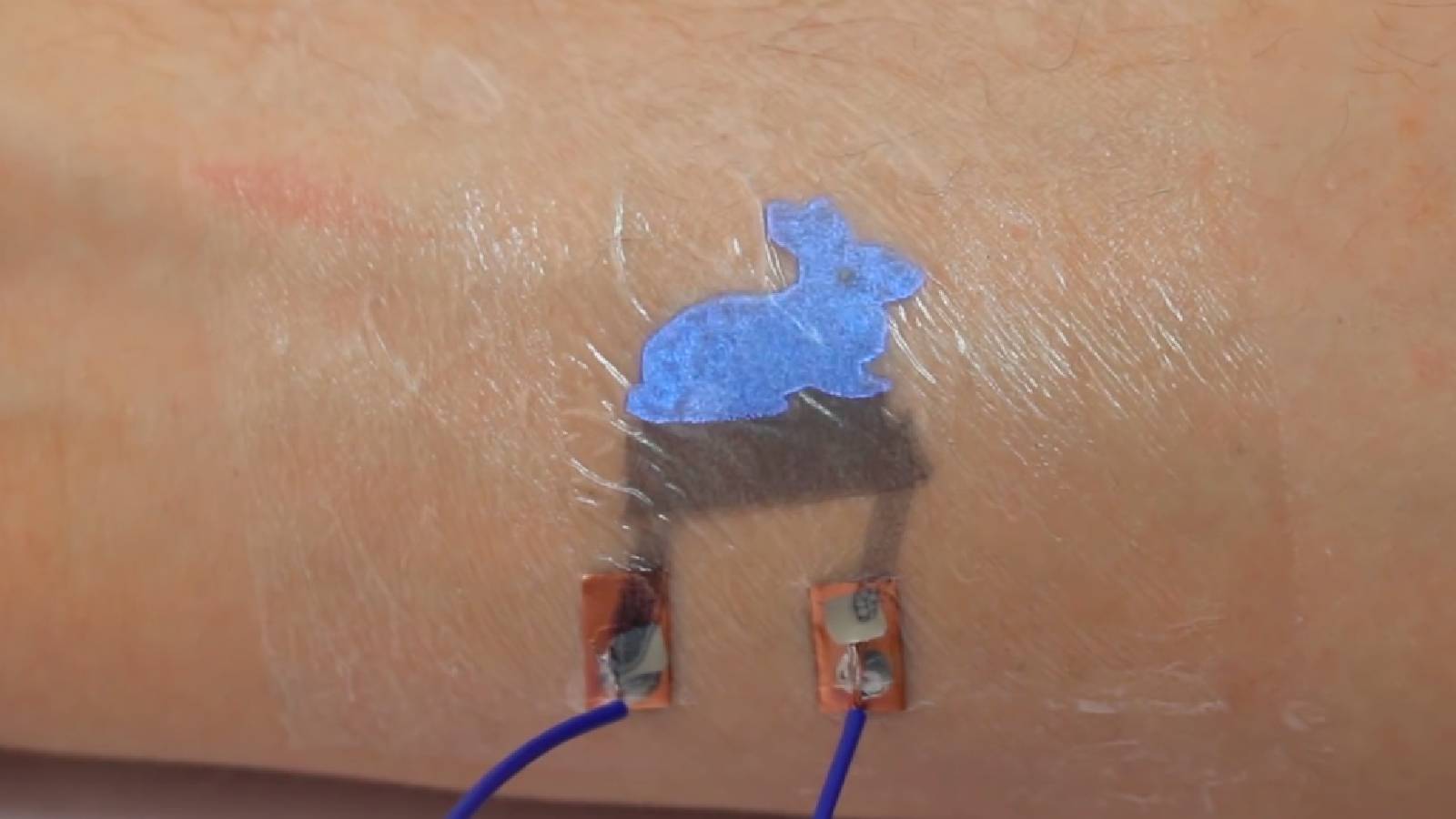Google SkinMarks could turn our bodies into a touchpad using high-tech tattoos
Smart body art

Google has been researching the possibilities of using rub-on tattoos to transform your skin into a fully-functioning touchpad.
Dubbed SkinMarks, the tattoos are packed with sensors and can be applied to curved areas of the body such as the knuckles. They aren’t as elaborate as you’d find at your local ink parlor, but some can feature light up displays, if that’s what you were after.
The SkinMarks tattoos can be triggered by tapping or by using swipe gestures, just like you’re used to on your smartphone. Some of the tattoos can be activated by more natural and instinctive fine motor skills, though, like bending your fingers.
- Best smartwatch: equip your wrist with top tech
- Apple Glasses: what we know so far
- Remembering what could have been: Google Glass review
The researchers at Saarland University in Germany noted in its 2017 white paper that a touchpad that exists on the body is a more natural way to engage with technology than using a separate device. For example, instead of whipping out your phone to check the weather report, you could simply squeeze your index finger with your thumb to hear a full report on what the day has in store.
Ink-credible
So how do these tattoos work? Well, they’re made by screen printing conductive ink onto tattoo paper, which is then thermal-cured so it can be applied to the skin. As mentioned above, the SkinMarks tattoos can be applied to bony or uneven surfaces, too.
“Through a vastly reduced tattoo thickness and increased stretchability, a SkinMark is sufficiently thin and flexible to conform to irregular geometry, like flexure lines and protruding bones,” wrote the Saarland University researchers who were funded by Google to develop the tech.
Touch your tattoo
Could we see SkinMarks in the near future, then? Don’t rule it out. Google is constantly experimenting with various new technologies, and this rub-on tattoo tech is no different. However, these types of research aren’t necessarily undertaken with an end goal in mind. Instead, they usually serve to encourage new ways of thinking that can be either implemented into existing products or predict market trends.
Sign up for breaking news, reviews, opinion, top tech deals, and more.
Still, we wouldn’t mind having a piece of interactive ink in the future. Let’s just hope they’re waterproof, though.
- Want to keep in touch? Sign up for TechRadar's daily newsletter
Via CNET

Adam was formerly TRG's Hardware Editor. A law graduate with an exceptional track record in content creation and online engagement, Adam has penned scintillating copy for various technology sites and also established his very own award-nominated video games website. He’s previously worked at Nintendo of Europe as a Content Marketing Editor and once played Halo 5: Guardians for over 51 hours for charity. He is now an editor at The Shortcut.